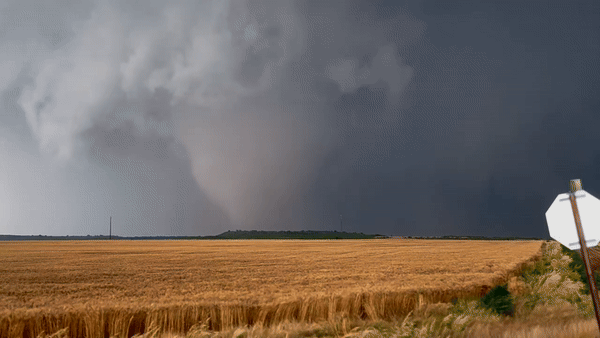NSSL’s researchers have long had the ability to envision important research not yet seen, and the scholarly standing to bring that research to reality. Sites at Inside NSSL offer a glimpse into the current academic and research activities of our scientists.
The statements and opinions expressed in the posts herein and subsequent comments do not represent the official position or policy of the NOAA National Severe Storms Laboratory. In the spirit of community and conversation, comments may be allowed and encouraged on some of the sites. However, NSSL reserves the right to remove any comments deemed inappropriate, offensive or not on topic.
Featured

NSSL News
NSSL News is the home for all lab news and updates on the most recent NSSL research and programs. NSSL News seeks to increase awareness of and promote the value of NSSL research, to develop and nurture partnerships in support of the NOAA mission, and to cultivate a passion for severe weather research results in the community.
Browse by site

ANCHOR
This project proposes to advance the state of observations of the water cycle across the U.S. in order to improve hydrologic forecasting with the new National Water Model (NWM).

ATD Calendar
Installed at the National Weather Radar Testbed facility, the Advanced Technology Demonstrator, or ATD, is the first full-scale, S-band, dual-polarization phased array radar built from the ground up and designed specifically for use as a weather radar.

Elizabeth Smith, Ph.D.
Elizabeth studies the boundary layer at the NOAA National Severe Storms Laboratory in Norman, Oklahoma.

EWP Blog
The Experimental Warning Program’s (EWP) mission is to improve the nation’s hazardous weather warning services by bringing together forecasters, researchers, trainers, technology specialists, and other stakeholders to test and evaluate new techniques, applications, observing platforms, and technologies.

FACETs-Severe
FACETs is a proposed next-generation forecast and warning framework that is modern, flexible, and designed to communicate clear and simple hazardous weather information to serve the public.

FLASH
The Flooded Locations And Simulated Hydrographs Project (FLASH) was launched in early 2012 with the primary goal of improving the accuracy, timing, and specificity of flash flood warnings in the US, thus saving lives and protecting infrastructure.

HWT EFP
The NOAA HWT Spring Forecasting Experiment is a yearly experiment that investigates the use of convection-allowing model forecasts as guidance for the prediction of severe convective weather.

KPHI TV
KPHI TV is the fictitious television news station affiliated with research in the Probabilistic Hazard Information (PHI) project in NOAA’s Hazardous Weather Testbed. The KPHI TV Weather Team is comprised of broadcast meteorologists that participate in the HWT PHI project.

MRMS QPE
The Multi-Radar Multi-Sensor (MRMS) project is a fully automated system that rapidly and intelligently integrates data from multiple radars and radar networks, surface and satellite observations, numerical weather prediction (NWP) models, and climatology to generate seamless, high spatio-temporal resolution mosaics.

NSSL 60th Anniversary
The NSSL 60th Anniversary Symposium, was held Thursday, Sept. 5, 2024 at the National Weather Center in Norman, OK. Thanks to all who attended and those that contributed to the success of NSSL throughout the past 60 years.

NSSL Staff Profiles
Meet our scientists! And our support staff, and everyone else.

PHI – Emergency Managers
Your source for ongoing EM social science research at CIWRO/NSSL.

RiVorS
This blog describes the field research conducted by NSSL researchers as part of the RiVorS project. During the 2017 Rivers of Vorticity in Supercells (RiVorS) project, researchers took their instruments to the storms, migrating throughout the central Great Plains from Texas to North Dakota.

Thomas J. Galarneau
Thomas joined the National Severe Storms Laboratory in May 2019. He has broad research interests in the multiscale dynamics and predictability of severe convective storms. More detailed information about Thomas’ research interests and activities can be found in his Bio, C.V., and publication list.

Tornado Tales
Collecting citizen science information about how tornadoes and tornado warnings directly affected YOU in your life. Tell us your tornado tale!

TOTAL
The main objective of the Telemetry of Total Accumulated Liquid (TOTAL) project is to collect the most accurate representation of precipitation that occurs at the surface, for use in for various radar and gauge-based studies.

Uncrewed Aircraft @ NSSL
Welcome to the home of Uncrewed Aircraft System (UAS) team! We aim to better understand tornado and wind damage. UAS data collection is a new approach that is gaining traction operationally and in the research community.

VORTEX-USA
VORTEX-USA continues the work of the VORTEX-SE program and expands it by seeking to increase our knowledge of meteorological processes and societal impacts of tornadoes nationwide, while gaining improved understanding of unique regional challenges.

VORTEX-SE In the Field
The Verification of the Origins of Rotation in Tornadoes EXperiment-Southeast project (VORTEX-SE) brought together meteorologists and social scientists to explore the storms and conditions that make tornadoes especially dangerous in the southeastern United States. This blog documents the field operations of VORTEX-SE from 2016 through 2019.

VORTEX2 News
This legacy blog contains posts and photographs from the Verification of the Origins of Rotation in Tornadoes Experiment 2 (VORTEX2) project, 2009–2010. VORTEX2 was the largest tornado research project in history to explore how, when and why tornadoes form, deploying ten mobile radars and 40 other instrumented vehicles.

The WDSS-II Blog
This legacy blog contains posts about NSSL’s WDSS-II development efforts. The Warning Decision Support System — Integrated Information (WDSS-II) was the second generation of a suite of algorithms and displays for severe weather analysis, warnings and forecasting.
